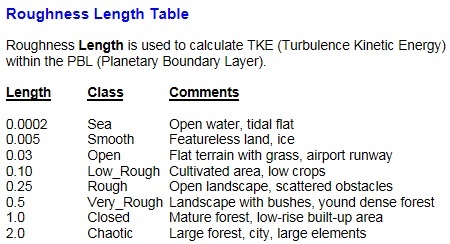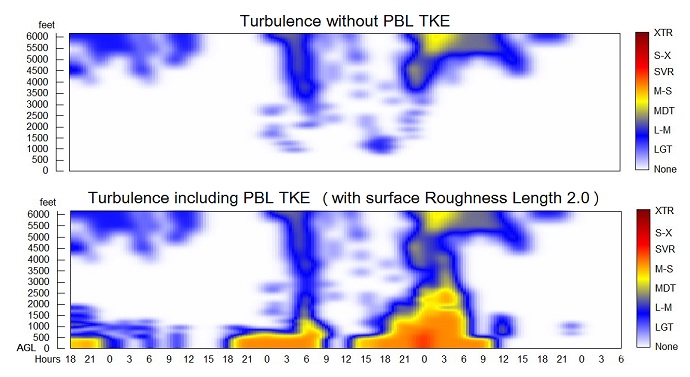RAOB's TKE Turbulence option
TKE affects PBL activities such as wind power generation, drones, UAVs and other light airframes.
The RAOB Program can now provide reliable, boundary-layer, turbulence information. RAOB does this with its new option to include terrain induced mechanical turbulence within the PBL (planetary boundary layer) or Mixing Layer. This is accomplished with the new "Include PBL TKE" turbulence option, where TKE represents Turbulence Kinetic Energy (see below image).

RAOB's traditional turbulence algorithms (both FAA and USAF) are solely based on wind shear and wind speed, whereas the PBL TKE option incorporates turbulence produced by terrain irregularities. These irregularities are defined by the Roughness Length, which is a user specified variable (as seen in the above image). By clicking on RAOB's Help button, the user will find a Roughness Length reference table, which correlates roughness lengths with terrain conditions. This reference table is presented below.

When the "Include PBL TKE" option is selected, RAOB's CAT output then reflects the added effects of TKE mechanical turbulence within the PBL layer. The user controls the magnitude of the TKE turbulence by specifying an appropriate Roughness Length for the area of interest. The user also controls how RAOB determines the PBL by using the Mixing Height calculation options located on the same "Algorithm Options" panel.
Below are 2 time-height diagrams comparing turbulence analyses without and with PBL TKE turbulence. The top diagram reflects turbulence only as a function of wind shear and wind speed, while the bottom diagram also includes the effects of terrain induced turbulence.
